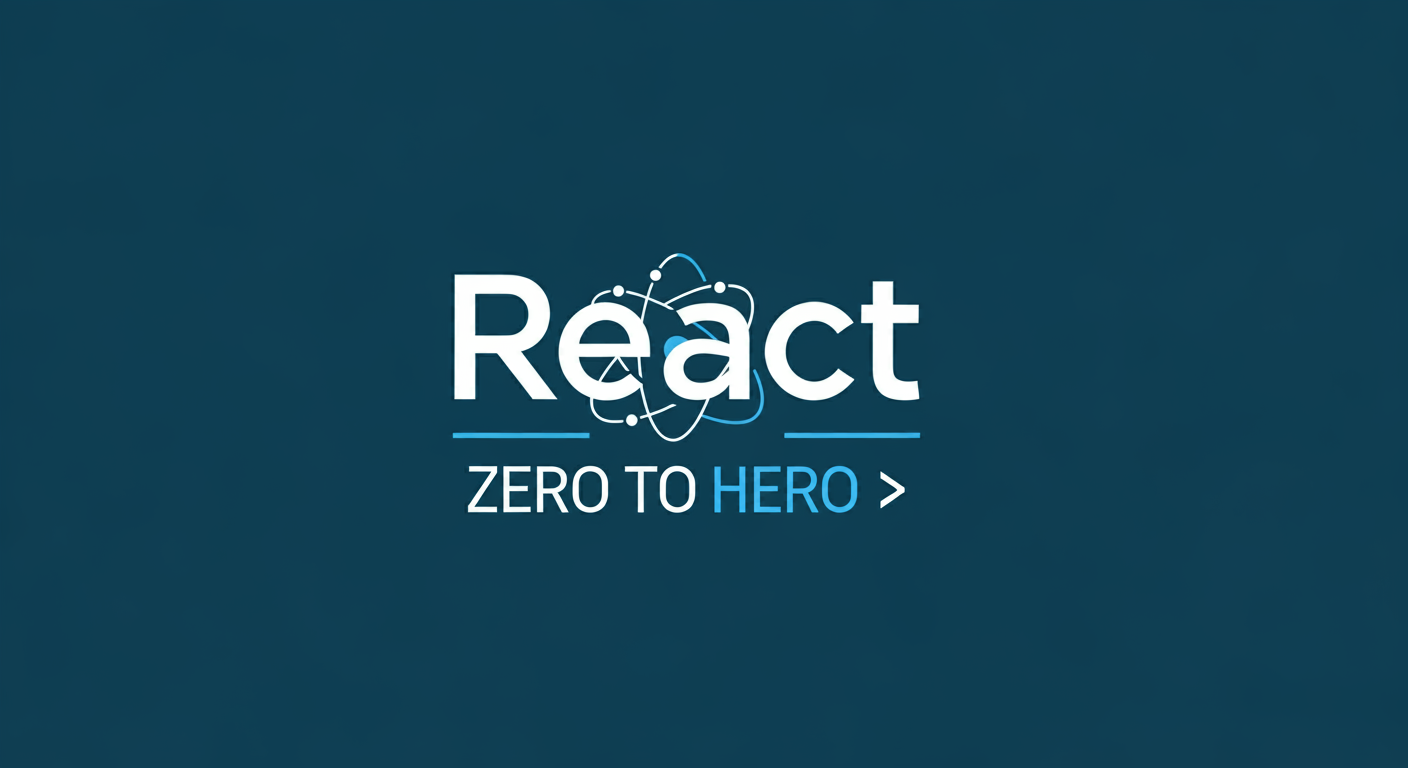Welcome to the next chapter in our React “Zero to Hero” series! In this post, we’ll dive into two essential concepts: event handling and conditional rendering. These features empower React developers to create interactive and dynamic user interfaces with ease. Let’s break it down step by step and see why they are fundamental for any React application.
Handling User Interactions in React
When users interact with a web application, such as clicking a button or typing into a form, React provides an efficient way to handle these interactions through event handlers. In React, event handlers are written as attributes on JSX elements, and their values are functions.
Common Event Handlers
Here are two widely used event handlers:
-
onClick: Triggered when a user clicks on an element.
-
onChange: Triggered when the value of an input field changes.
Example: Handling Button Clicks
Let’s start with a simple example. Suppose we have a button, and clicking it should display an alert.
import React from "react";
function App() {
const handleClick = () => {
alert("Button clicked!");
};
return (
<div>
<button onClick={handleClick}>Click Me</button>
</div>
);
}
export default App;In this example, the handleClick function is executed when the button is clicked, showcasing how easy it is to handle user interactions in React.
Example: Capturing Input Changes
Now, let’s see how to use the onChange event to capture user input in a form field:
import React, { useState } from "react";
function App() {
const [inputValue, setInputValue] = useState("");
const handleChange = (event) => {
setInputValue(event.target.value);
};
return (
<div>
<input type="text" value={inputValue} onChange={handleChange} />
<p>Typed Value: {inputValue}</p>
</div>
);
}
export default App;Here, useState is used to track the input value, and the handleChange function updates the state whenever the input value changes.
Conditional Rendering in React
Conditional rendering allows React to decide which elements to display based on a condition. It’s like using if-else or switch statements in JavaScript but directly in JSX.
Example: Rendering Based on a Condition
Let’s create a toggle button that switches between two states:
import React, { useState } from "react";
function App() {
const [isLoggedIn, setIsLoggedIn] = useState(false);
const toggleLogin = () => {
setIsLoggedIn((prevState) => !prevState);
};
return (
<div>
<h1>{isLoggedIn ? "Welcome Back!" : "Please Log In"}</h1>
<button onClick={toggleLogin}>
{isLoggedIn ? "Log Out" : "Log In"}
</button>
</div>
);
}
export default App;In this example, the isLoggedIn state determines what message and button text to display. This is a practical demonstration of conditional rendering.
Why These Concepts Matter
Mastering event handling and conditional rendering is crucial for creating interactive and user-friendly applications. Here are a few reasons why:
Use Cases:
-
Enhanced Interactivity: Event handlers make applications responsive to user actions, improving user experience.
-
Dynamic UI: Conditional rendering allows for personalized interfaces that adapt to user input or preferences.
-
Efficiency: React’s virtual DOM ensures that only the necessary parts of the UI are updated, making these interactions seamless.
Potential Challenges:
-
Complexity: As applications grow, managing multiple event handlers and conditions can become cumbersome.
-
State Management: Ensuring state updates correctly in response to user interactions requires careful planning.
Real-World Applications
-
E-Commerce Websites: Use conditional rendering to show different product recommendations based on user preferences.
-
Social Media Platforms: Event handling captures user interactions such as likes, shares, and comments.
-
Interactive Forms: Real-time feedback on form inputs is enabled through
onChangeevents.
Try it yourself
Challenge
Build Your Own Component with Conditional Rendering
Create a new React component called UserStatus that displays whether a user is online or offline. Use conditional rendering and a button to toggle the user’s status.
Steps
Create the Component
- Create a new file
UserStatus.jsin thecomponentsfolder. - Inside the component, manage a state variable
isOnlineto track the user’s status (online or offline).
Design the UI
- Display a message:
"The user is currently online"or"The user is currently offline", based on theisOnlinestate. - Add a button to toggle the user’s status between online and offline.
Use the Component in App.js
- Import
UserStatusintoApp.js. - Display the
UserStatuscomponent below theCookieBakersection.
Template
UserStatus.js (Component)
import React, { useState } from "react";
const UserStatus = () => {
const [isOnline, setIsOnline] = useState(false);
const toggleStatus = () => {
setIsOnline((prevStatus) => !prevStatus);
};
return (
<div>
<h2>User Status</h2>
<p>
The user is currently <strong>{isOnline ? "Online" : "Offline"}</strong>.
</p>
<button onClick={toggleStatus}>
{isOnline ? "Set Offline" : "Set Online"}
</button>
</div>
);
};
export default UserStatus;Conclusion
Event handling and conditional rendering are foundational building blocks for React applications. By mastering these concepts, developers can create dynamic, interactive, and efficient user interfaces that respond seamlessly to user actions.
We encourage you to experiment with these concepts in your projects and think about how they can be applied in real-world scenarios. In the next chapter, we’ll explore state management in greater detail to further enhance your React skills.
Stay tuned, and happy coding!


